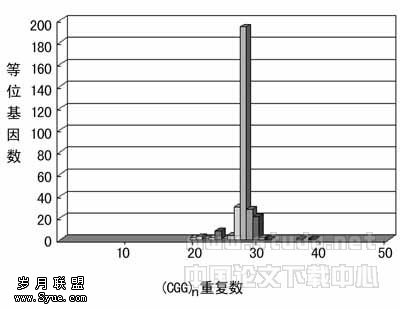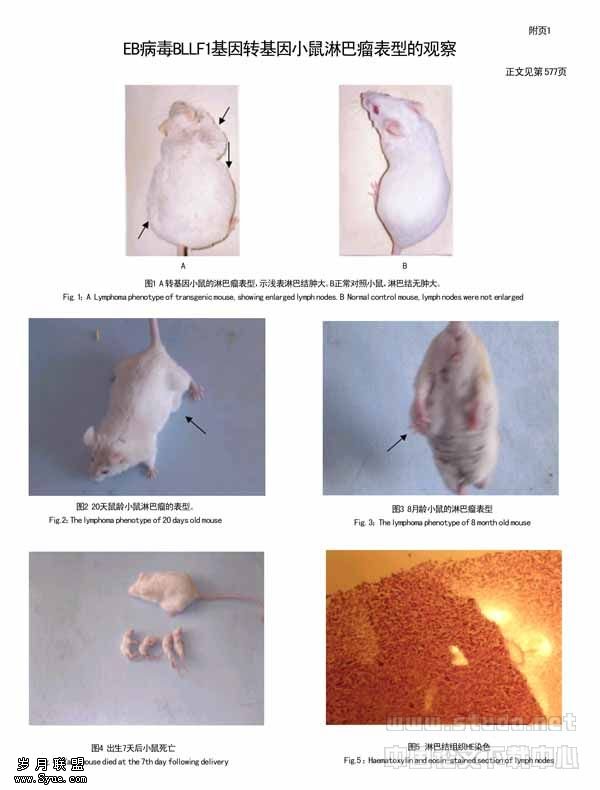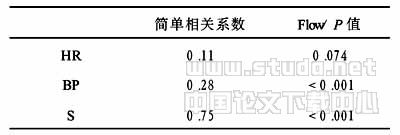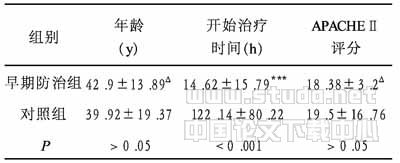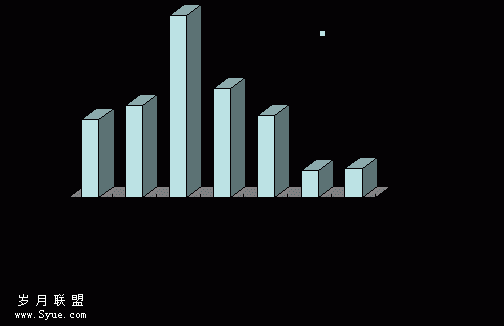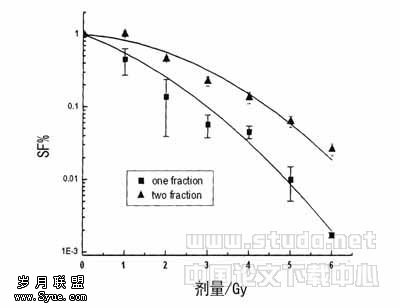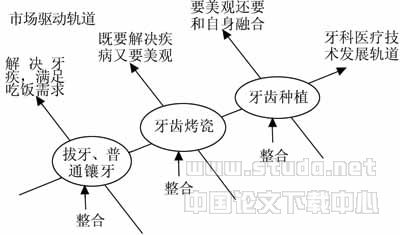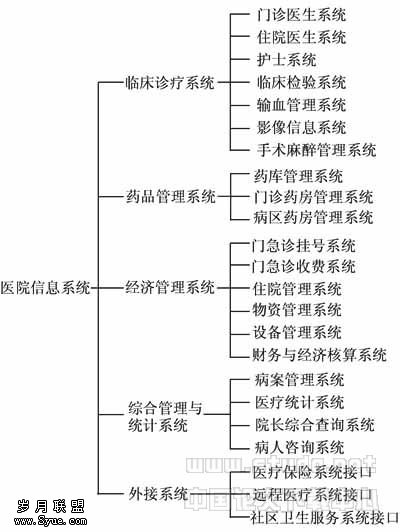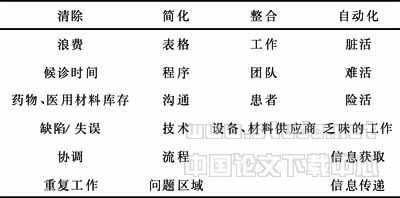非霍奇金淋巴瘤患者外周血CD4+CD25high调节性T细胞研究
作者:刘莉,姚军霞,丁乾,黄士昂
【摘要】 本研究分析B细胞非霍奇金淋巴瘤(B-NHL)患者外周血T细胞亚群及CD4+CD25high调节T(Tr)细胞比例及其变化,初步探讨B-NHL免疫抑制机制,以及化疗对此免疫抑制功能的影响。采用流式细胞术检测42例初治B-NHL患者、36例化疗后达CR/PR患者及15例正常健康者(对照组)外周血CD3+、CD4+ 、CD8+和CD4+ CD25high T细胞的比例。结果显示: B-NHL患者CD3+ 及CD4+ T细胞比例、 CD4/ CD8比值均低于正常对照组,它们依次为(68.33±15.27)%,对照(72.06±9.26)%;(34.47±12.84)%,对照(42.45±9.2)%;1.36±0.26,对照1.92±0.20,但CD4+ CD25high Tr细胞比例明显高于正常对照组,为(4.10±1.21)%,对照(2.04±1.03)%,( P < 0.001)。化疗后组CD4/ CD8比值低于化疗前组(P<0.05);而外周血CD4+ CD25high Tr细胞比例,显著高于化疗前组和对照组(P<0.01)。结论:B-NHL初治化疗前及化疗后患者外周血CD4+ CD25high Tr细胞比例都显著升高,提示CD4+ CD25high Tr细胞可能是B-NHL患者免疫抑制的重要原因之一。
【关键词】 非霍奇金淋巴瘤
CD4+ CD25high Regulatory T Cells in Peripheral Blood of Patients with B Cell Non-Hodgkin’s Lymphoma
Abstract This study was aimed to analyze the proportion of T cell subsets,CD4+ CD25high regulatong T cells (Tr) in peripheral blood of B-NHL patients and thier change regularity,and to investigate the immunosuppression mechanism and influence of chemotherapy on immunosuppression function of B-NHL patients. The peripheral blood was collected from 42 patients with B-NHL,36 patients with B-NHL who achieved partial remission (PR)or complete remission (CR) after 4-6 cycles of chemotherapy and 15 healthy controls. By using monoclonal antibodies,the blood samples were evaluated with the flow cytometry for lymphocyte subsets and Tr cells. The results showed that the proportion of CD3+ and CD4+ T cells,and the ratio of CD4/ CD8 in patients with B-NHL group was significantly less than those in the healthy controls,i.e.(68.33±15.27)% versus (72.06±9.26)%;(34.47±12.84)% versus (42.45±9.2)%;1.36±0.26 versus 1.92±0.20,but the prevalence of the CD4+ CD25high Tr cells was significantly higher than those in the healthy group〖(4.10±1.21)% versus (2.04±1.03)%,P < 0.001]. The ratio of CD4/ CD8 in chemotherapy group was lower than that in control,but the proportion of CD4+ CD25high Treg cells in chemotherapy group was higher than those before chemo-/radio-therapy and the control. It is concluded that the relative increase of CD4+ CD25high Tr cells in peripheral blood of B-NHL parients may be related to immunosuppression and tumor progression.
Key words non-Hodgkin′ s lymphoma;T-cell subset;chemotherapy/radiotherapy;CD4+ CD25high regulatory T cells
近期动物实验发现一个有独特免疫调节功能的T细胞亚群: CD4+ CD25+调节性T(Tr)细胞,它不仅能抑制自身免疫性疾病发生,还可能参与肿瘤免疫的调节;该细胞通过与细胞直接接触发挥作用,而不依赖于其分泌的细胞因子。肿瘤环境中 CD4+ CD25+调节性T细胞比例增加,导致肿瘤免疫失调[1]。而正常人外周血中主要是表达高水平的CD25的CD4 T细胞(CD4+ CD25high),后者具有与小鼠体内 CD4+ CD25+ 调节性 T 细胞免疫调节的作用[2]。
本研究采用流式细胞术分析初治化疗前及多程化疗后B细胞非霍奇金淋巴瘤(B-NHL)患者外周血CD4+ CD25high Tr细胞比例及其变化的特点,初步探讨其与肿瘤发生、的关系及其临床意义。
材料和方法
临床病例
本组78例B-NHL均为2002年10月- 2005年2月在华中科技大学协和肿瘤中心及协和医院血液病研究所门诊/住院患者,均经病确诊。其中初治化疗前患者42例,经4-6周期CHOP方案化疗达CR/PR患者36例。所有患者3月内未接受输血和其他,PS状态≤1。对照组为我院体检健康者15例,男9例,女6例,年龄26-68岁,平均48.2±12岁(表1)。Table 1. Clinical characteristics of 78 B-NHL patients and 15 healthy controls(略)
主要试剂
PE标记的鼠抗人CD4、CD8抗体,FITC标记的鼠抗人CD25、CD3抗体,同型对照分别为PE标记的鼠抗人IgG1免疫球蛋白,FITC标记的鼠抗人IgG1免疫球蛋白,均为美国Becton Dickinson公司产品。
方法
所有观察对象均于清晨空腹抽取静脉血2 ml,EDTA抗凝。应用荧光直接标记法及流式细胞仪检测外周血单个核细胞(PBMNC)膜表面CD3 、CD4、CD8、CD25。取不同荧光标记的单克隆抗体各20 μl,分别加入100 μl肝素抗凝的外周血中,室温下孵育15分钟,加入红细胞裂解液,用PBS洗涤2次,用流式细胞仪(Becton Dickinson公司,FACS Calibur)检测,Cellquest软件分析数据,记录阳性细胞百分率,减去非特异对照值。
统计学处理
SAS软件进行单因素方差分析比较化疗前组、化疗后组、正常对照组外周血T细胞亚群的差别。以P <0.05定义为有统计学意义。
结 果
B-NHL化疗前组外周血调节T细胞比例
化疗前组患者CD3+ 、 CD4+ T细胞及CD4/CD8比值低于正常对照组,但其CD4+ CD25high Tr 细胞比例明显高于正常对照组(表2)。CD4+ CD25high Tr细胞CD45RA-,CD69-流式细胞图见图1。
B-NHL患者外周血CD4+ CD25+high Tr细胞特点
与小鼠体内外周血CD4+ CD25+high Tr细胞水平不同,正常人外周血高表达CD25+的CD4+ T细胞 (CD4+ CD25+high Tr细胞) 仅占所有CD4+ T细胞的 (2.04±1.03)%,呈尾状,染色较淡,与国外报道的1%-2%一致[2]。B-NHL患者外周血CD4+ CD25+high Tr细胞比例明显升高。统计学有极显著差异(P< 0.01)。B-NHL病人和正常人的CD4+CD25+high Tr细胞的流式细胞图见图2。Table 2. Comparison of the T cell subtypes between the group of before and after chemotherapy,and healthy contro(略)
B-NHL化疗后组外周血调节T细胞比例
化疗后组患者CD3+ 、 CD4+ T细胞及CD4/CD8比值均低于化疗前组和正常对照组(P< 0.05),但其CD4+ CD25high Tr细胞比例明显高于化疗前组和正常对照组(P< 0.01)(表2)。
讨 论
B-NHL患者普遍存在着免疫抑制,研究淋巴瘤患者的免疫抑制程度对于制定更合理的综合方案具有重要的指导意义,但是目前尚无理想的免疫评估指标能准确地反映机体的免疫功能状态。CD4+ CD25+ Tr细胞是近年发现的一种新型免疫抑制细胞,1995年由Sakaguchi等[3]首次报道,其免疫抑制机理目前尚不完全清楚。目前认为,天然CD4+ CD25+ Tr细胞来源于胸腺,但也可以在持续性抗原刺激及IL-10等细胞因子条件下在外周血中诱导产生[4]。胸腺选择使CD4+ CD25+Tr细胞具有免疫无能性和免疫抑制性两大功能[1],通过与细胞直接接触发挥其免疫抑制作用,如抑制CD4+ 和CD8+ T细胞的活化和增殖,抑制 CD4+ CD25- T细胞、NKT细胞的增殖及分泌IL-2的功能,抑制CD8+ 记忆性T细胞的反应能力,下调DC的表面共刺激分子的表达,降低抗原递呈的效率等[5-7]。转录因子NFATc2 和 NFATc3在CD4+ CD25+ Tr细胞抑制CD4+ T细胞中发挥重要作用[8]。在癌症患者中,许多由自体同源T细胞识别的肿瘤相关抗原已被证实是正常的自体成分,而不是突变基因的异常产物,这表明肿瘤免疫在一定程度上也是一种自身免疫[4]。因此,CD4+ CD25+ Tr细胞可能具有抑制肿瘤免疫的作用。它的鉴定被认为是近年免疫学领域的重大突破,也是目前免疫学领域的研究热点之一。随着研究的深入,近年发现在人类CD4+ CD25high Tr细胞发挥强大的免疫调节功能[2],而且具有高度均一性,98%以上的CD4+ CD25high Tr细胞表达CD45RO,不表达CD45RA[9]。
关于CD4+ CD25+ Tr细胞在肿瘤患者免疫抑制方面的临床研究国外已有报道,如在卵巢癌、肺癌、乳腺癌、结肠癌等多种肿瘤患者的外周血和肿瘤局部中CD4+ CD25+ Tr细胞成分增加[11-13]。但是,关于CD4+ CD25high Tr细胞在肿瘤患者免疫抑制方面的临床研究目前尚未见报道。本课题组研究结果显示:正常人外周血中CD4+ CD25+high Tr细胞占所有CD4+ T细胞的(2.04±1.03)% 与国外报道一致(1%-2%)[2]。42例B-NHL患者外周血的CD4+ CD25high Tr细胞比例增加,CD3+及CD4+ T细胞比例明显低于正常对照组,造成 B-NHL的细胞免疫功能抑制。但是本研究未发现B-NHL患者外周血中CD4+ CD25high Tr细胞比例与患者PS状态、临床分期、病理类型之间存在明显相关性,这可能与病例数较少有关。
本实验从细胞免疫方面研究发现,化疗后CD4+ T细胞减少、CD8+ T细胞升高、CD4+ /CD8+比值下降及CD4+ CD25high Tr细胞增高等,说明化疗对B-NHL患者免疫系统有明显抑制作用。CD4+ CD25high Tr细胞比例的升高可能是化疗后免疫机制进一步受抑制的主要机制之一。
CD4/CD8比值是目前临床上最常用的反映免疫功能状态的指标,但许多研究报道,该指标与患者的分期、肿瘤负荷、PS状态及患者的生存之间没有很好的相关性[13]。另一方面由于CD4+ T细胞和CD8+ T细胞各自包含了很多功能各异的细胞群体,因此CD4/CD8比值不可能全面反映机体的免疫功能状态。本研究发现,CD4+ CD25high Tr细胞比例与临床观察结果更具有较好的一致性。因此,CD4+ CD25high Tr细胞比例可能是一个较好的反映细胞免疫功能状态的指标,有望在临床上用于免疫功能的监测。
由于CD4+ CD25high Tr细胞在人类肿瘤免疫抑制中的重要性,它在人类肿瘤治疗中的价值也日益受到关注。动物实验已证实,应用抗CD25抗体抑制CD4+ CD25+ Tr细胞功能可提高肿瘤免疫功能;体外实验表明,应用IL-2刺激前从外周血中去除CD4+ CD25+ Tr细胞可产生更多CTL 和LAK/NK细胞[14,15]。因此,去除荷瘤小鼠和人的Tr细胞可能是一种肿瘤免疫治疗的有效方法。最近,国外动物实验也显示,抗CD25+ Tr细胞单克隆抗体联合IL-12基因转入B16F10黑色素瘤细胞,使小鼠黑色素瘤退缩[16]。因此如果能将特异性阻断CD4+ CD25high Tr细胞的方法和增强机体特异性抗肿瘤的免疫功能手段有机结合,将会进一步提高B-NHL的治疗效果。
【参考文献】
1Itoh M,Takahashi T,Sakaguchi N, et al. Thymus and autoimmunity: production of CD25+CD4+ naturally anergic and suppressive T cells as a key function of the thymus in maintaining immunologic self-tolerance. J Immunol,1999;162: 5317-5326
2Baecher-Allan C,Brown JA,Freeman GJ, et al. CD4+ CD25high regulatory cells in human peripheral blood. J Immunol,2001;167: 1245-1253
3Sakaguchi S,Sakaguchi N,Asano M, et al. Immunologic self-tolerance maintained by activated T cells expressing IL-2 receptor alpha-chains (CD25). Breakdown of a single mechanism of self-tolerance causes various autoimmune diseases. J Immunol,1995;155: 1151-1164
4Seo N,Hayakawa S,Takigawa M, et al. Interleukin-10 expressed at early tumour sites induces subsequent generation of CD4+ T-regulatory cells and systemic collapse of antitumour immunity. Immunology,2001;103: 449-457
5Horwitz DA,Zheng SG,Gray JD. The role of the combination of IL-2 and TGF-beta or IL-10 in the generation and function of CD4+ CD25+ and CD8+ regulatory T cell subsets. J Leukoc Biol,2003;74: 471-478
6Piccirillo CA,Shevach EM. Cutting edge: control of CD8+ T cell activation by CD4+ CD25+ immunoregulatory cells. J Immunol,2001;167:1137-1140
7Azuma T,Takahashi T,Kunisato A, et al. Human CD4+ CD25+ regulatory T cells suppress NKT cell function. Cancer Res,2003;63: 4516-4520
8Bopp T,Palmetshofer A,Serfling E, et al. NFATc2 and NFATc3 transcription factors play a crucial role in suppression of CD4+ T lymphocytes by CD4+ CD25+ regulatory T cells. J Exp Med,2005;201: 181-187
9Baecher-Allan C,Brown JA,Freeman GJ, et al. CD4+ CD25+ Regulatory T cells from human peripheral blood express very high levels of CD25 ex vivo.Novaritis Found Symp. 2003,252: 67-88;dicussion 88-91,106-114
10Sasada T,Kimura M,Yoshida Y, et al. CD4+ CD25+ regulatory T cells in patients with gastrointestinal malignancies: possible involvement of regulatory T cells in disease progression. Cancer,2003;98: 1089-1099
11Dieckmann D,Plottner H,Berchtold S, et al. Ex vivo isolation and characterization of CD4+ CD25+ T cells with regulatory properties from human blood. J Exp Med,2001;193:1303-1310
12Wolf AM,Wolf D,Steurer M,et al. Increase of regulatory T cells in the peripheral blood of cancer patients. Clin Cancer Res,2003;9: 606-612
13Tanaka H,Tanaka J,Kjaergaard J,et al. Depletion of CD4+ CD25+ regulatory cells augments the generation of specific immune T cells in tumor-draining lymph nodes. J Immunother,2002;25: 207-217
14Diederichsen AC,Hjelmborg JB,Christensen PB, et al. Prognostic value of the CD4+ /CD8+ ratio of the tumour infiltrating lymphocytes in colorectal cancer and HLA-DR expression on tumour cells. Cancer Immunol Immunother,2003;52: 423-428
15Sutmuller RP,van-Duivenvoorde LM,van-Elsas A, et al. Synergism of cytotoxic T lymphocyte-associated antigen 4 blockade and depletion of CD25+ regulatory T cells in antitumor therapy reveals alternative pathways for suppression of autoreactive cytotoxic T lymphocyte responses. J Exp Med,2001;194: 823-832
16Nagai H,Horikawa T,Hara I,et al. In vivo elimination of CD25+ regulatory T cells leads to tumor rejection of B16F10 melanoma,when combined with interleukin-12 gene transfer. Exp Dermatol,2004;13: 613-620


